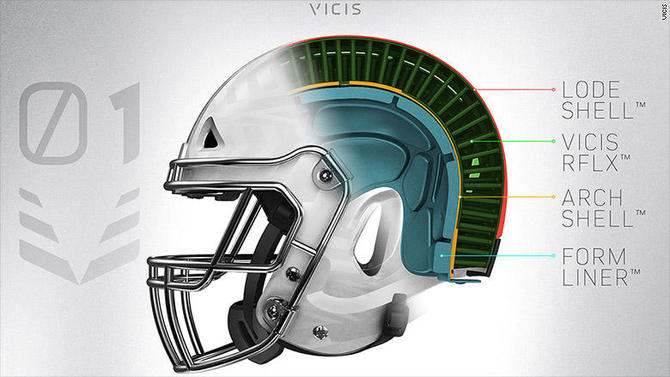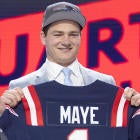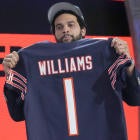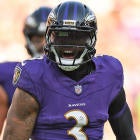With awareness of head trauma in the NFL increasing every year, a lot is being done to get the league to try to protect its athletes. However, something that people aren't necessarily looking closely at is the helmets themselves.
VICIS, a helmet manufacturing upstart that NFL teams are contracting for their new headgear, has designed a revolutionary new helmet, the ZERO1, that claims to protect players better than the current shells. Its technology is already being seen as a "new normal" in NFL helmet design due to its reliability and durability. The helmet will be used by half of NFL teams and "many college teams in the Top 20," according to Dave Marver, CEO of the company. And it will look a bit different than the helmets you're used to seeing on Sundays.
Or on your local high school football team. Yes, the same technology powering helmets at your local Dick's was the same technology powering NFL headgear.
"NFL players were wearing the same helmets available at the local sporting goods' store," Marver said after a slight chuckle when he was asked the price. "These were designed for elite athletes, shells tailored to those athletes. Each helmet custom is fitted by equipment managers in the locker room. As a result of all that, the price will be $1,500."
So what are the specific elements -- AKA the science -- that make up the VICIS helmet?
What's inside the helmet?
VICIS helmets use a form of engineering that is unique from how helmets have been made in the past. According to the company's website, the helmet is made with layers (like an ogre or a parfait), and those layers work in harmony to lessen the impact of hits, both as they occur and over time. Per their site: "The ZERO1's multiple layers work together to slow impact forces. The helmet features a soft outer shell and an underlying layer of columns designed to mitigate collisions from multiple directions."
Columns: The columns refer to the VICIS reflex system. The helmet is designed with a series of plates that work in concert to reduce the trauma behind impact. As the helmet starts to fold and yield, it absorbs the impact of the hit and redistributes it throughout the helmet, rather than simply reverberating around a player's head.

FOV: The helmets also expand the normal field of view (FOV) for players, in order to keep their head on a swivel to level big blows. Players being blind-sided often results in injuries, so expanded FOV will let players preempt big hits so that they can brace accordingly.
Argon: Facemasks are made of titanium, which is the norm for facemask development, but the facemasks are bathed in Argon gas to purge oxygen. Oxygenized facemasks are corroded, which can lead to weaker facemasks.
Titanium: The snaps that hold the chinstraps up? Gone. Replaced with titanium studs in order to improve both fit and comfort of the helmet. A snug helmet is a safe helmet.
Comfort: All-in-all, the helmet has 300 sizing options, and it doesn't use air bladders. The customization of the helmet is a key part of the draw, as players can get an ideal fit on their helmets without needing artificial padding on top of the helmet itself. This lets the helmet do its job on its own terms.
"They're designed so they can easily be fitted and adjusted as need arises," Marver said. "So if a player gets a new haircut, he can get his helmet fitted around it in the locker room the same day."
Here's an in-depth look at the new technology:
The helmet is currently the No. 1 ranked helmet by the NFL and the NFLPA in terms of safety, and according to Marver -- the company CEO -- teams have taken notice. "We have orders from about half of the NFL teams and many of the college teams in the top 20," he said. As of now, VICIS is staying focused on play at the elite level, but Marver mentioned plans of expanding in the near future.
Marver said he was struck by the lack of innovation in helmets since the current design was implemented.
"Helmets haven't changed much in the past 40 years," he said. "They've had a hard, plastic shell, like cars in the 50s and 60s." Marver went on to explain the distinction between normal helmets and the VICIS design. "Normal helmets don't yield," he said. "These ones yield during collisions, which cushions the impact like a car bumper. It also makes our helmets more durable over time than the current plastic shells, which crack and weaken with more collisions."






















